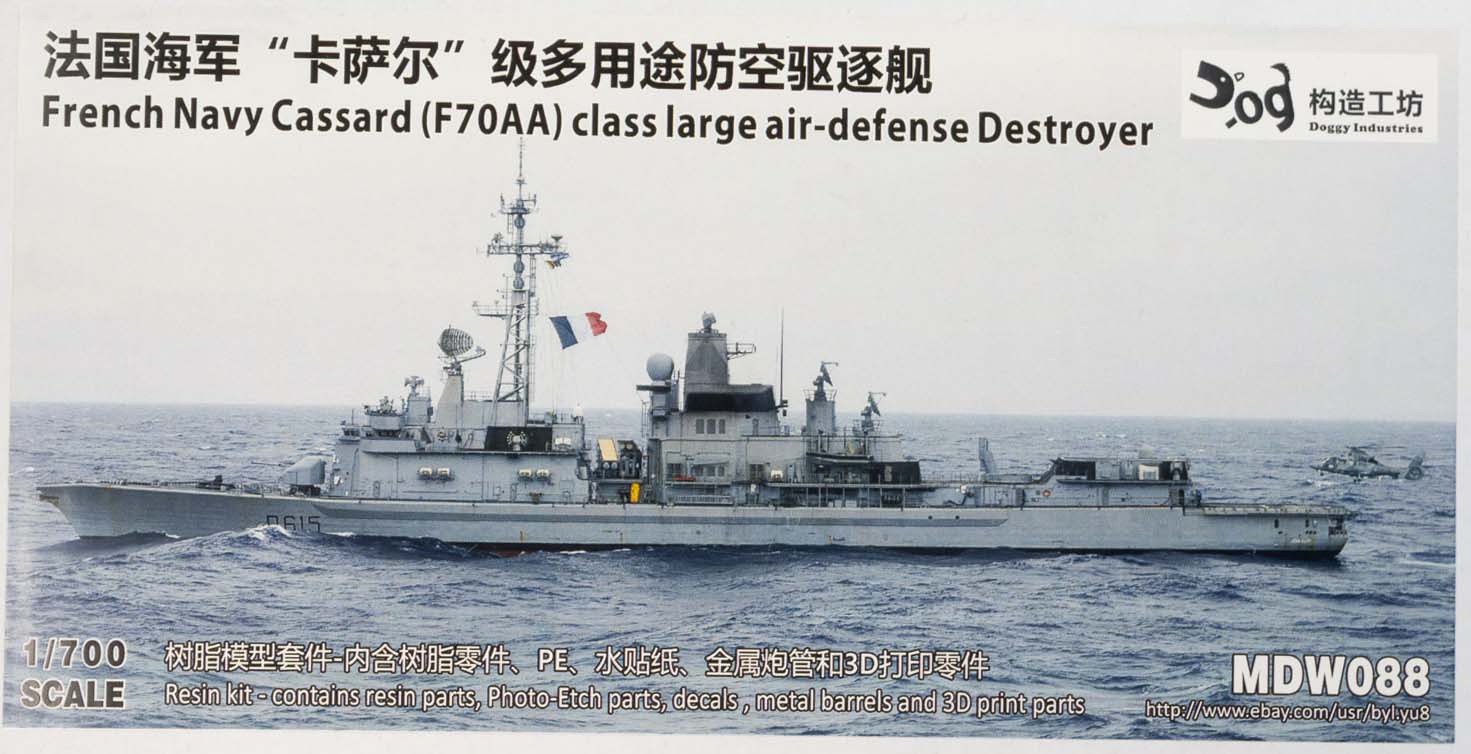French Navy Cassard (F70AA) Class
Large Air-Defense Destroyer
Reviewed by Devin Poore, June 2025
The Seaforces website has many photos of Cassard that will be helpful in building the kit: D-614 Cassard.
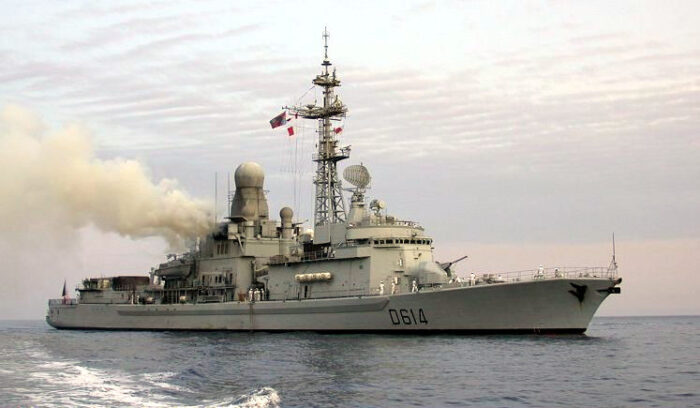
Overall detail is extremely sharp, some of the best I've ever seen in a cast resin hull. As it's from a printed master, under magnification, you can make out very faint layer lines here and there, but nothing that's really visible with the naked eye. My example does have a slight depression/gouge on the aft port quarter, but it's in a area that's devoid of detail and can be filled and sanded easily. Portholes on the hull are slightly filled-in from the casting process, but that's typical of cast resin hulls. These can be quickly remedied by a twist or two from a drill bit and pin vise. Other than the slight gouge previously mentioned, the only real issue I see with the hull are the tie-downs on the helo deck; they're way too prominent to my eye, but an extra coat of primer in that area should knock them back nicely.
Multiple sources state the full-sized ships as 456' in length. Overall length of the model's hull comes in at just over 7.8", which is spot-on for 1/700th scale.
Note: the close-up shots in this review were taken with a macro lens, so any small defects you might see aren't at all visible to the naked eye.
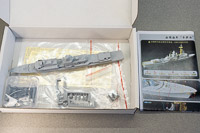
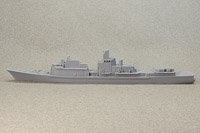
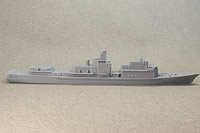
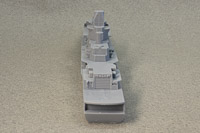
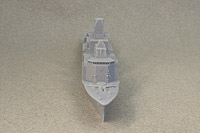
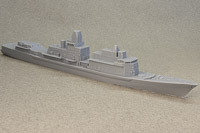
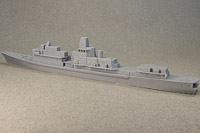
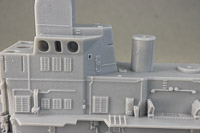
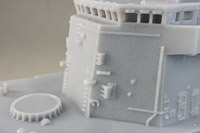
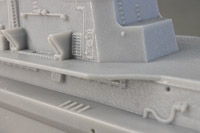
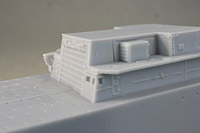
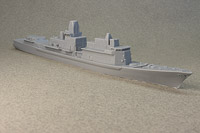
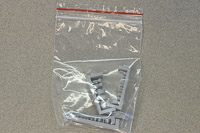

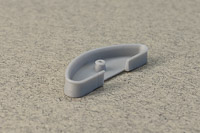

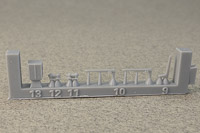
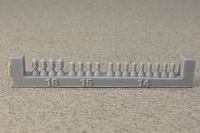

The rest of the printed parts are on a single raft, and include the gun mount, missile launcher base, Harpoon canisters, the SPG 51 missile illuminator, and a mesh search radar, plus other pieces. The fidelity of these parts is amazing. I've seen 1/350th scale printed mesh radar screens before that looked like they'd had one too many grilled cheese sandwiches and ended up on the thick side; still nice, but not as fine as one would like. This mesh radar in 1/700 scale looks in-scale and impressively delicate. Even the supports holding the pieces are thinner than any I've seen before, so I have no doubt these will remove easily with no breakage to the parts.
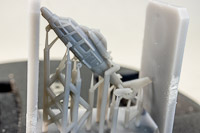
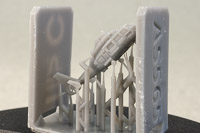
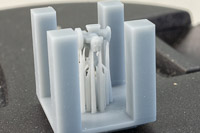
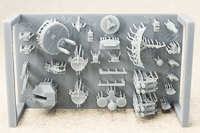
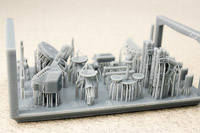
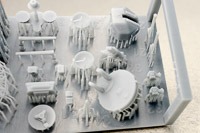
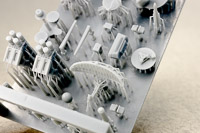
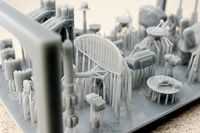

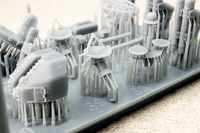
There's one plastic bag that I initially thought empty, only to look closer and see a turned brass gun barrel for the main gun mount. Don't lose it! The rest of the brass is photoetched, with a small square one for the helicopter with both deployed and folded rotors, and other parts that you'll have to find references for, as the helo isn't shown at all in the instructions.
Finally the main photoetch fret has all of the normal stuff you'd expect for a ship model: ladders, railings, flight deck safety nets, cages for the Harpoon canisters, and pieces to make up the main mast assembly. Pieces that need to be folded, such as that mast assembly, various platforms, what look to be flag bags, etc., have relief-etched lines to show exactly where to fold and to ease the process.
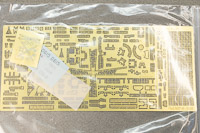
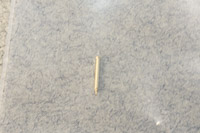
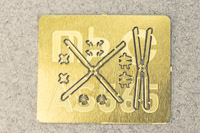

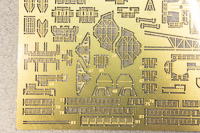

One thing I noticed is that while there are railings provided for and shown for the deck house levels, no railings are shown for the main deck. I think there are enough on the fret to do the entire ship, but only building will tell that tale.
Overall the instructions should be adequate. They're not Flyhawk or Tamiya by any means, but they show (almost) everything in place. These printouts and some photos of the real thing will get you there.
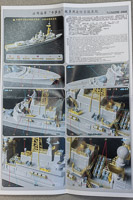
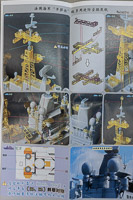
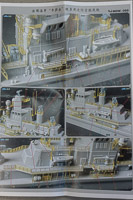

Due to the delicate brass assembly required for the mast construction, and the sparse directions in the instructions sheet, I wouldn't recommend this as a first resin kit, but for someone that's got one or two 1/700 scale styrene or resin kits in their rear-view, I think this would be a great project.
Highly recommended. Thank you to Doggy Industries for this review sample. You can find their kits on eBay, by searching "Doggy Industries", and view their offerings on Facebook, which is linked via their logo to the right.


© ModelWarships.com
